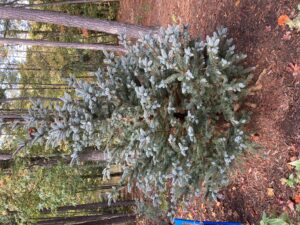Plant Health Alert – Your Yard Is Not a Plant Nursery
go.ncsu.edu/readext?892253
en Español / em Português
El inglés es el idioma de control de esta página. En la medida en que haya algún conflicto entre la traducción al inglés y la traducción, el inglés prevalece.
Al hacer clic en el enlace de traducción se activa un servicio de traducción gratuito para convertir la página al español. Al igual que con cualquier traducción por Internet, la conversión no es sensible al contexto y puede que no traduzca el texto en su significado original. NC State Extension no garantiza la exactitud del texto traducido. Por favor, tenga en cuenta que algunas aplicaciones y/o servicios pueden no funcionar como se espera cuando se traducen.
Português
Inglês é o idioma de controle desta página. Na medida que haja algum conflito entre o texto original em Inglês e a tradução, o Inglês prevalece.
Ao clicar no link de tradução, um serviço gratuito de tradução será ativado para converter a página para o Português. Como em qualquer tradução pela internet, a conversão não é sensivel ao contexto e pode não ocorrer a tradução para o significado orginal. O serviço de Extensão da Carolina do Norte (NC State Extension) não garante a exatidão do texto traduzido. Por favor, observe que algumas funções ou serviços podem não funcionar como esperado após a tradução.
English
English is the controlling language of this page. To the extent there is any conflict between the English text and the translation, English controls.
Clicking on the translation link activates a free translation service to convert the page to Spanish. As with any Internet translation, the conversion is not context-sensitive and may not translate the text to its original meaning. NC State Extension does not guarantee the accuracy of the translated text. Please note that some applications and/or services may not function as expected when translated.
Collapse ▲Your yard is not a plant nursery managed by professional growers. The tree you buy at the nursery will likely never look as good as it did the day you bought it unless you work at maximizing the plant’s growing conditions. We gardeners cannot be expected to be able to care for plants as well as nursery or garden center workers who have dedicated their careers to the cultivation of plants.

Trees experience needles in the interior dying because the plant is adjusting to the conditions of the planting site; in less sun and probably because it is not being watered or fertilized enough.
Trees in the nursery are full of leaves and needles inside and out because they are getting maximized amounts of sun, water and nutrients. Nurseries where plants are grown are in full sun and the trees get watered daily and fertilized frequently. An analogy would be me going to fitness camp where I ate the optimal kinds and amounts of food, got the perfect amount of exercise and rest. If I spent months there I would return home in the best shape of my life. Unfortunately when I got home and went back to work and my regular routine, I would have a difficult time maintaining the nutrition and fitness regime. I would never look as healthy as I did when I got home from the fitness camp.




